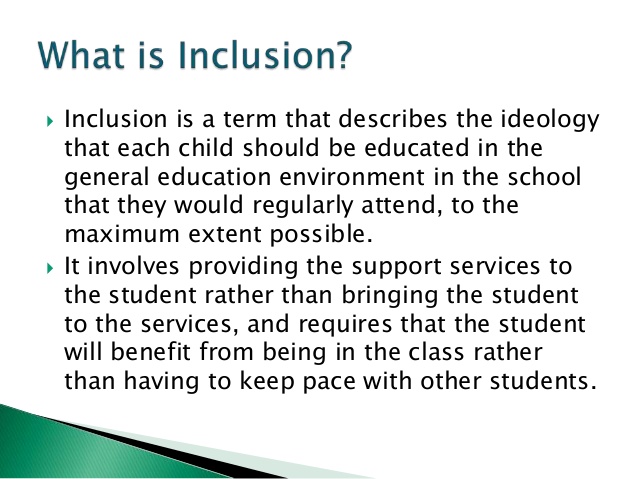Is the psychology of education beginning to shift from integration to inclusion, is it a simple modernization of the term, or are we facing a change in values and practices?You can see that replacing one word with another with a similar meaning may not be very important. However, it is the concepts that define our world and the extension of terms is about visualizing new perspectives. After all, what is inclusion in education?
If you go to a school and ask if students are integrated they will probably tell you yes, that’s for sure, they will show the names of some students with disabilities, immigrants or other socially disadvantaged situations and tell you that they are receiving proper training. If you wonder if students feel integrated into school, the answer will probably no longer be accompanied by such an angry certainty.
- When we talk about integration we think of socially disadvantaged students who receive education and training like any other.
- This term is based on the question of being within or outside the educational field.
- But when we talk about inclusion we do not limit ourselves to that aspect The importance revolves around the social and personal well-being of students.
Inclusion is about students being treated with equality, care and respect, like the unique people they are. Is it also important to be careful to make them feel comfortable inside the school?Ecosystem? That is, making sure they have meaningful relationships and participate in life within the school.
An essential difference between the two terms is the universality of one, given the selectivity of the other. When we talk about integration, we focus on a stigmatized group that receives a “normal” education. On the other hand, in an inclusive model, consider the personal situation of each student and seek their integration into the school.
Any student, even if they are not part of a stigmatized group, may feel excluded, for example, a shy child who has trouble making friends or another who is concerned about their sexual orientation is probably not included. children, sometimes with disastrous consequences.
The main reason for inclusion is not to achieve the social and personal well-being of students as well, it would be a mistake to think of such immediate goals, the goal of inclusion is to achieve a significant improvement in the education and teaching of students. The important thing is that all students develop their full potential and can improve without obstacles.
For this to be possible, the social and personal well-being of students is essential, as an uncomfortable person will have few resources, which is a major barrier to learning, so educational integration measures will be insufficient in this regard.
An example of this is there? Special education created for integration. They are designed to provide specialized instruction to students who cannot keep up with the lesson. However, they have become more of an exclusion mechanism than supportive, classifying some students as “normal” with their social and social impact. personal well-being.
Another fundamental aspect is that if we want to educate with equality, cooperation and without discrimination, we must lead by example, we cannot educate on these values unless the school is based on an inclusive model with that support.
It is easy to create a theoretical model that seems to fill these gaps, but when it comes to implementing the objective becomes much more complicated, it is normal that we encounter certain political, economic and social barriers, sometimes quite difficult to overcome; however, we can always take steps to try to get as close as possible to the theoretical model.
Research on inclusive education shows a series of measures that help a lot in the right direction, among these strategies, the most effective and important are:
Self-assessment is a key aspect of previous proposals, which is reflected in most of them, if we are to achieve an inclusive school, a permanent review of what is happening in the centres is necessary, after this self-assessment it is necessary to take the necessary measures to correct the mistakes that are supposed to be obstacles in moving to inclusive education.
An inclusive school, with all the depth that the term implies, is a utopia, however, this does not mean that we should refrain from getting as close as possible to it, quite the opposite, utopias exist to mark the way forward and make it happen. an objective that motivates and guides our actions.

